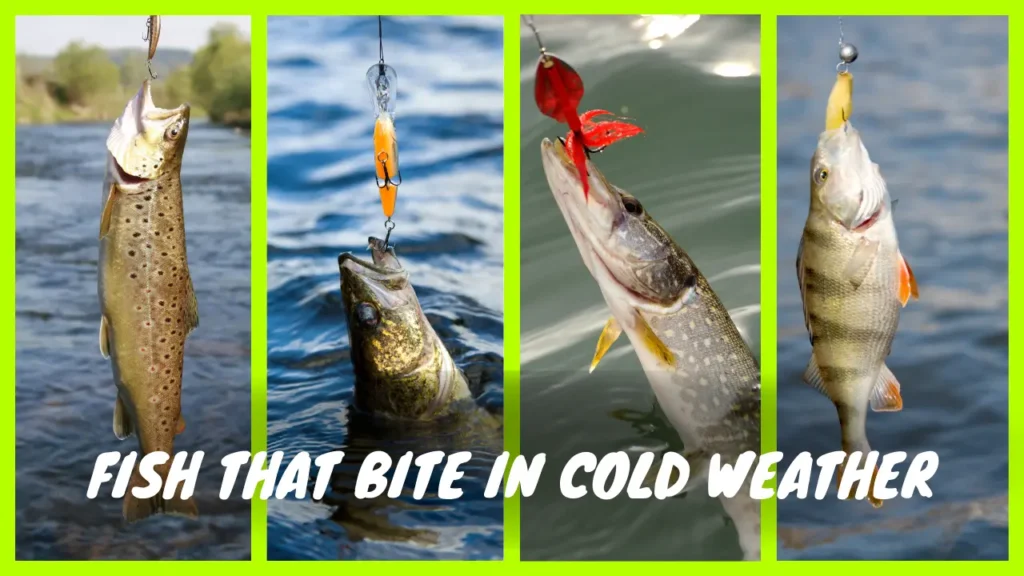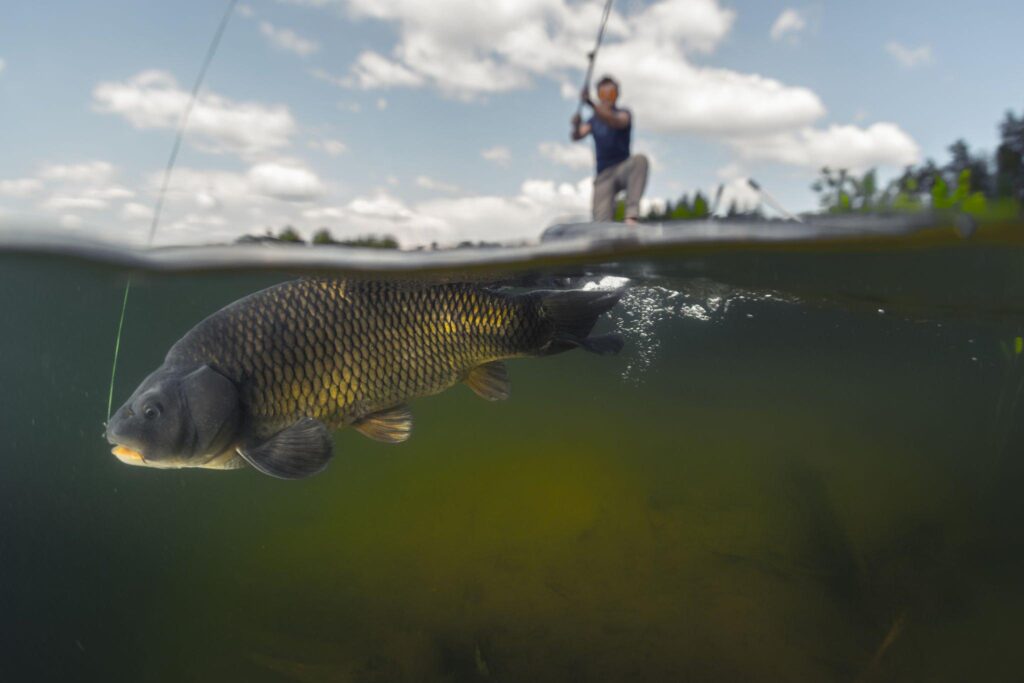Fishing is often seen as a warm weather pastime. However, many anglers know that colder months can be just as exciting — if not more so — when you understand what fish bite in cold weather and how to approach them. Cold weather fishing offers its own set of challenges, but it also presents unique opportunities.

As air and water temperatures drop in the winter months, the behavior of fish changes dramatically. While some species become sluggish and inactive, others will feed aggressively despite frigid conditions.
Table of Contents
Best Cold Water Target Species
While most freshwater fish will bite at some point in cold water given the right conditions, the following species are the most active and catchable once temperatures drop:
- Trout – Aggressive biters across a wide temperature range. Will hit mealworms, live/cut bait, and artificial lures.
- Walleye – Low light and night feeding peaks in fall and winter. Jigs tipped with minnows are top producers.
- Perch – School and feed actively before ice-up. Small spoons, jigs, and minnows work well.
- Pike – Voracious cold water ambush feeders. Target weed edges and points with large plugs or live bait.
- Striped Bass – Feed heavily on shad in late fall/winter. Simple lipless cranks mimic injured bait.
- Catfish – Utilize warmer bottom structure. Dead or live bait on bottom rigs is the way to go.
Why Certain Fish are More Active in Colder Waters
Metabolism and Cold Water: Fish are ectothermic creatures, meaning their body temperature varies with their environment. In colder waters, a fish’s metabolism slows down, conserving energy. While this may suggest that they’d be less active, the opposite is often true for many species. They may need to eat more frequently to sustain themselves, leading them to be more aggressive and, therefore, more likely to bite.
Less Competition: Many fish species migrate to warmer areas or go deeper into water bodies during colder months. This means the ones that remain active have less competition for food, making them more receptive to biting baits and lures.

Breeding Seasons: Some fish species, like the walleye and the whitefish, spawn in colder months. This makes them more active as they search for mates and suitable spawning grounds.
How Water Temperature Influences Fish Behavior
Effects of water temperature on fish behavior:
| Water temperature | Effect on fish behavior |
|---|---|
| Below optimal temperature (<10°C) | Decreased metabolism and activity, reduced feeding and growth, increased susceptibility to disease |
| Optimal temperature (10-20°C) | Increased metabolism and activity, peak feeding and growth, optimal reproduction |
| Above optimal temperature (>20°C) | Increased metabolism and activity, increased stress and susceptibility to disease, reduced feeding and growth, avoidance behavior |
Here are some specific examples of how water temperature influences fish behavior:
- Atlantic salmon swim faster at higher temperatures.
- Black bullheads reduce their feeding behavior at temperatures above their optimal range.
- Rainbow trout move to cooler water when temperatures rise above their comfort level.
- Coral reef fish become more aggressive and territorial at higher temperatures.
Water temperature doesn’t just affect the metabolism of fish. It has a profound impact on their daily and seasonal behaviors.
- Temperature Zones: Lakes and ponds often undergo a process called stratification, where they separate into distinct temperature layers. Fish will move between these layers seeking their preferred temperature range, affecting where you might find them during fishing.
- Oxygen Levels: Cold water holds more dissolved oxygen, a crucial element for fish survival. Higher oxygen levels in cold water can make fish more active and lively.
- Feeding Patterns: As mentioned, in cold water, many fish need to eat more to sustain themselves. However, the type of prey available may also change with temperature, affecting the choice of baits and lures for anglers.
Cold Weather Fishing Techniques and Baits
When targeting fish that bite in cold weather, it’s essential to adapt your techniques and baits.
Remember, fish are conserving energy. A slower retrieve or presentation can be more enticing to these lethargic creatures.
In colder temperatures, fish often prefer natural baits like worms, minnows, or insects. They appear more genuine to fish that might be more suspicious in their slowed state.
Smaller lures can often be more effective in cold water, as they mimic the smaller prey that fish might be feeding on during these months.
As many fish go deeper in cold weather, using deep-diving lures or weighted lines can help you reach them.

What fish bite in cold weather?
Trout, walleye, perch, pike, striped bass, and catfish are among the top species that will readily bite in cold water temperatures. Trout and walleye in particular feed aggressively across a wide cold water temperature range.
Lipless crankbaits, jigs tipped with minnows, spoons, and bottom rigs baited with live or dead bait are all effective cold water techniques.
Focusing on deep pools, structure, and warmer discharge areas also improves success.
While many fish become lethargic in winter, targeting the most active cold water species and using the right tactics leads to great catches.
You may also like to know: Do Fish Bite in Cold Weather? Winter Fishing Tips
FAQs:
Why do some fish still bite aggressively in cold water?
Certain species like trout and walleye are well adapted to handle cold temperatures. Their metabolism and feeding instinct stay strong.
What water temperature range is ideal for cold water fishing?
40-60°F is the prime range for most active cold water species. Below 40°F feeding slows.
Should I use different baits and lures in the winter?
Yes, slow moving baits like jigs, spoons, and live bait work best as fish are less active.
References:
